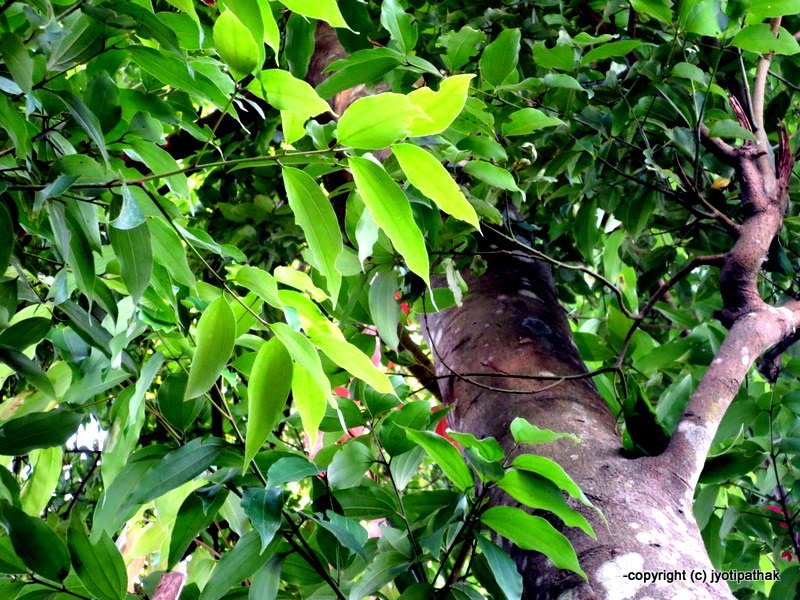The Fragrant Allure of Tejpaat (Cassia Leaves)
 |
| Dried Tejpaat leaves |
These highly scented leaves come from medium-sized evergreen aromatic tree, cinnamomum cassia (Lauraceae family). It is commonly found growing wild in Sinduli Rasuwa, Salyan, Dolpa district and many other adjoining southern Terai regions of Nepal. The leaves are shinny, somewhat oblong shaped, tough, usually have three prominent and straight veins running downs the length of the leaves, and attractive dark green color. Once dried, cassia leaves turn into dull brown to green and have a warm, sweet and distinct aroma of cinnamon.
 |
| Cassia Leaves are ready to be picked |
Nepali farmers pick the leaves and tiny branches by hands, tie into small bundles, hang them upside down to dry under the relentless Terai sun. The leaves are also left to dry naturally in warm and airy places to retain full flavor. They are dried until all the moisture has been evaporated. Then the leaves are separated from the branch and packed in plastic bags for marketing. Tejpaat leaves are also sold in fresh or dried forms in Nepali vegetable markets. In fact, the fresh leaves are more robust, have distinctive flavor and fragrance, compared to dried ones, but the dried ones can be stored for a long time.
The dried leaves are lightly sauteed in oil to bring out the flavor for all kinds of spiced meat curries, gravy-based fish curries, savory rice dishes, lentils, some sweet dishes, vegetables stews and soups. Some Nepali families use fresh or dried tejpaat when making clarified butter (gheu). The leaves are gently simmered with clarified butter for a delicious aroma. They are usually removed from the dish before it is served. Cassia leaves are an important spice ingredient for the preparation of Nepali Garam Masalaa. When the recipe calls for cassia leaves, you can use fresh or dried leaves. When using fresh ones adjust the amount in the recipe because the fresh is more aromatic and strongly flavored. In the West, they are available at Asian food markets, whole or torn into small pieces under the name "Indian Bay Leaves." The leaves are also known to have some medicinal properties and for the treatment of colic pain and diarrhea.
%2BDinner%2Bpra-mary%2B010.JPG) |
| Just picked, fresh cassia leaves in a wicker basket (doko) for sale at local Nepali market |
Air-dried cassia leaves - a little Nepali village girl is helping strip the dried leaves from the branch
What is the difference between dried cassia leaves and bay leaves? Why use one over the other?
There is a little confusion between cassia and bay leaves. They look somewhat similar in appearance and color. They can be substituted, but they will have entirely different flavor.
They are often labeled as "Indian bay leaves," or just "bay leaves", causing confusion with the leaf from the bay laurel, a tree of Mediterranean origin in a different genus. The appearance and aroma of the two are quite different. This may lead to confusion when following recipes. Bay laurel leaves are shorter and light to medium green in color, with one large vein down the length of the leaf, while tejpaat leaves are about twice as long and wider, usually olive green in color, and with three veins down the length of the leaf. True tejpaat leaves impart a strong cassia or cinnamon-like aroma to dishes, while the bay laurel leaf's aroma is more reminiscent of pine and lemon. Indian grocery stores usually carry true tejpaat leaves....continue reading here...

%2BDinner%2Bpra-mary%2B009.JPG)


